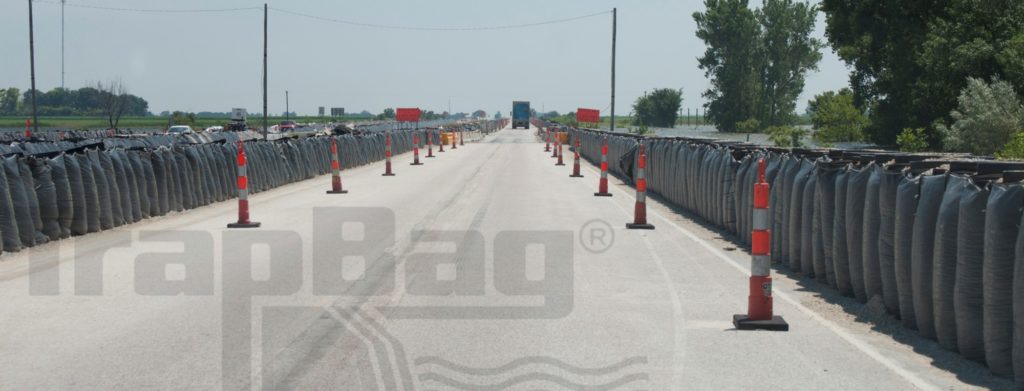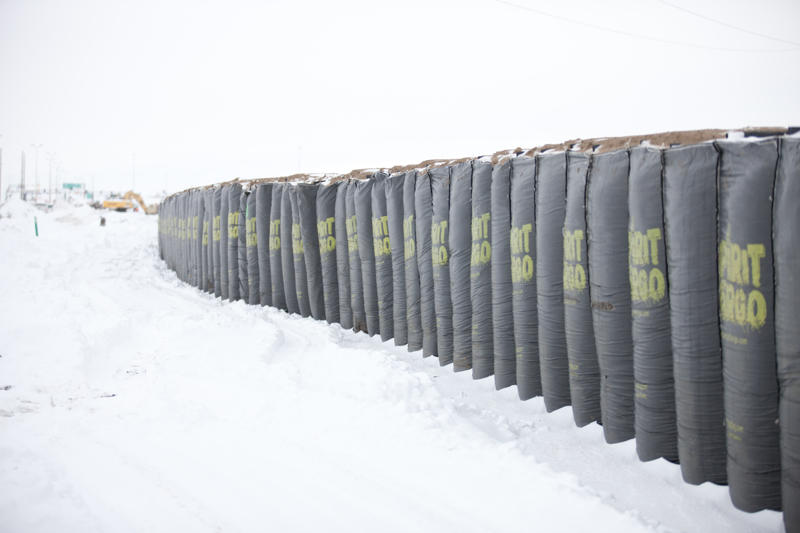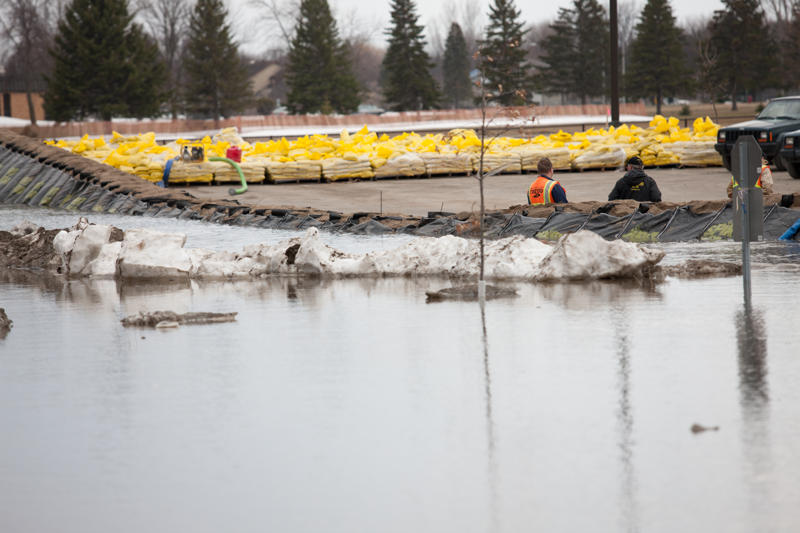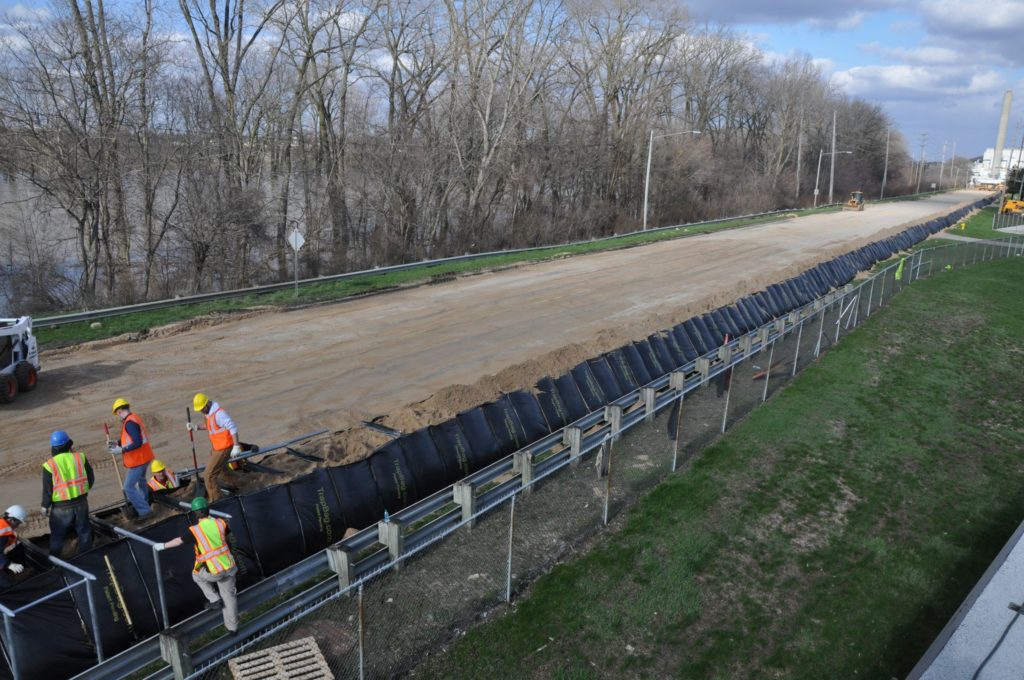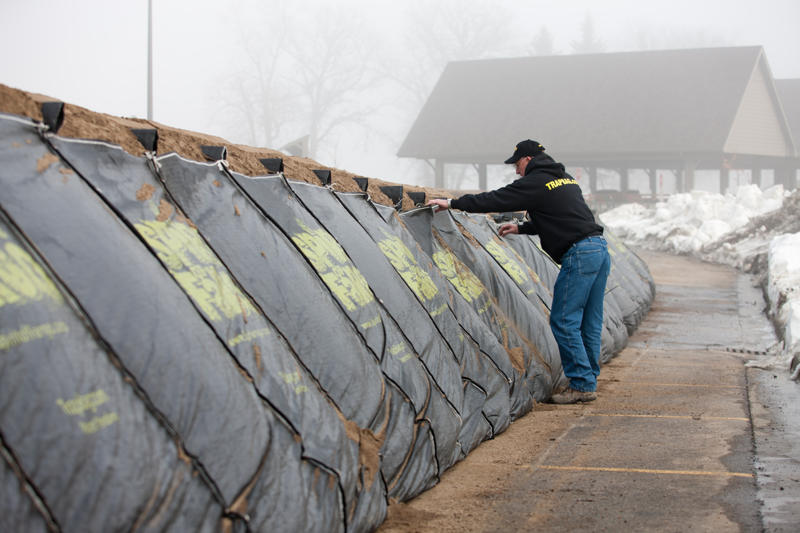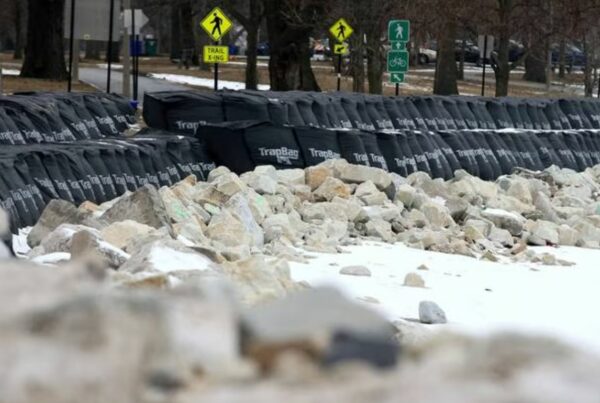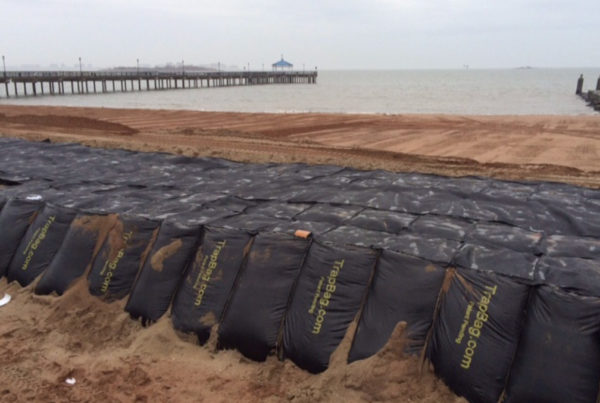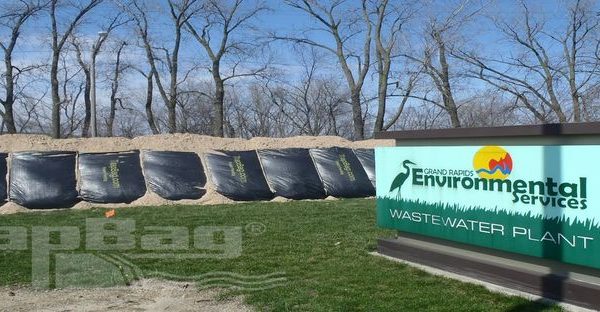Floods can happen virtually anywhere in the world. They also cause billions of dollars in damage each year. That’s why flood protection barriers like TrapBag® are essential for keeping communities and businesses safe during catastrophic events.
Flood Protection Barriers & Control Systems
How Do TrapBags Work as Flood Protection Barriers?
A TrapBag barrier comprises a series of pentagon-shaped bags made of high-strength textiles. Each cell in the barrier is sloped on one side, vertical on the opposite side, and open at the top for easy filling. The cells are connected side by side like an accordion. The cells are all self-contained, but they rely on their neighboring cells for added strength.
Deploying TrapBag Barriers is as easy as two simple steps:
- Pull out like an accordion: The entire TrapBag barrier will be collapsed and folded up in its packaging. Set the TrapBag bundle in the desired location. Pull the barrier out like an accordion to the desired length, up to 50 feet. The barrier will stand up on its own.
- Begin filling: This should be done using an excavator, front-end loader, bobcat, or a similar piece of equipment. Sand, concrete, or washed gravel are the best fill materials for TrapBags.
During flood emergencies, every moment counts. Because they can be filled all at once, TrapBag is an excellent choice for agencies and organizations that need to protect communities and property ahead of flooding events.
Related Projects
Types of Flood Damage TrapBag Can Prevent
With strength and durability that the U.S. Army Corps of Engineers has successfully tested, TrapBag is the perfect solution for flood protection systems of all types. These are just a few of the types of flood damage these barriers can reduce or prevent.
River Flooding
River floods can strike anywhere, in any season. The damage doesn’t only come from large rivers like the Mississippi or the Platte, either—even small creeks can cause thousands of dollars in damage during a flooding event.
However, because TrapBag creates a watertight barrier that can withstand the dangerous strength of floodwaters in a river, they’re an ideal solution for river flood protection. They’re also easier to set up and stronger than other types of barriers.
Coastal Flooding
Several contributing factors can lead to coastal flooding along America’s oceans and lakes, including ongoing rain, severe storms, flash floods, and aging levee systems. No matter the direct origins, coastal flooding can cause damage such as destroyed roads and bridges, flooded sewer systems, and threats to life.
TrapBag barriers make excellent temporary levees to protect coastal areas from flood damage. Each cell in the barrier is independent from those surrounding it, but they all draw strength from one another—meaning they won’t give way as easily as traditional sandbags during a coastal flood.
Storm Surge
Storm surges are usually associated with hurricanes and tropical storms. Typically, the storm-force winds push the water inward as they make landfall, sometimes flooding entire city blocks in low-lying areas during the most severe events.
TrapBag barriers are strong, versatile, and easy to deploy quickly. Originally designed with storm surge protection in mind, they serve as a watertight barrier that can protect streets from being flooded with seawater.
Inland Flooding
Inland flooding is most commonly associated with hurricanes and other coastal storms. While people who live further away from the coast may be relatively safe from storm surges, the hurricane’s heavy rains can overwhelm drainage systems.
TrapBag barriers are excellent for detaining and controlling the flow of stormwater. This can prevent inland drainage systems from becoming overwhelmed and make it easier to keep untreated stormwater out of the sewer systems.
Flash Floods
In the minutes and hours after a severe storm, flash flooding can cause serious and unexpected damage to streets and buildings. These life-threatening floods often strike with little warning, making them especially dangerous in areas that had previously experienced dry weather.
While flash floods are challenging to predict, TrapBag barriers can be set up ahead of stormy weather to prevent vulnerable areas from becoming overwhelmed or affected.
Why Use TrapBag as an Alternative to Sandbags
TrapBag improves the design of traditional sandbags in several ways that can save time and labor without compromising on durability and security. Here are just a few of the reasons why TrapBag makes a better floodwater barrier than traditional sandbags:
- Easier to fill: It can take dozens of people hours or even days to build a traditional sandbag barrier—giving them less time to evacuate or prepare for the storm individually. However, a team of two people using a skid steer or another piece of heavy equipment can finish building a TrapBag barrier within a few hours.
- Uses less material: Compared to a stacked sandbag wall of the same size, a TrapBag barrier uses 40 percent less fill material. A single 100-foot section of 4-foot TrapBags replaces roughly 8,000 sandbags.
- Less likely to break: There is a large margin for errors in the process of building a traditional sandbag barrier, which can lead to the whole structure giving way easily during a severe flooding event.
Who Uses TrapBags as Flood Protection Solutions?
Virtually any organization can use TrapBags as flood protection products for properties, work sites, and entire neighborhoods. These are just a few types of organizations we’ve helped over the years.
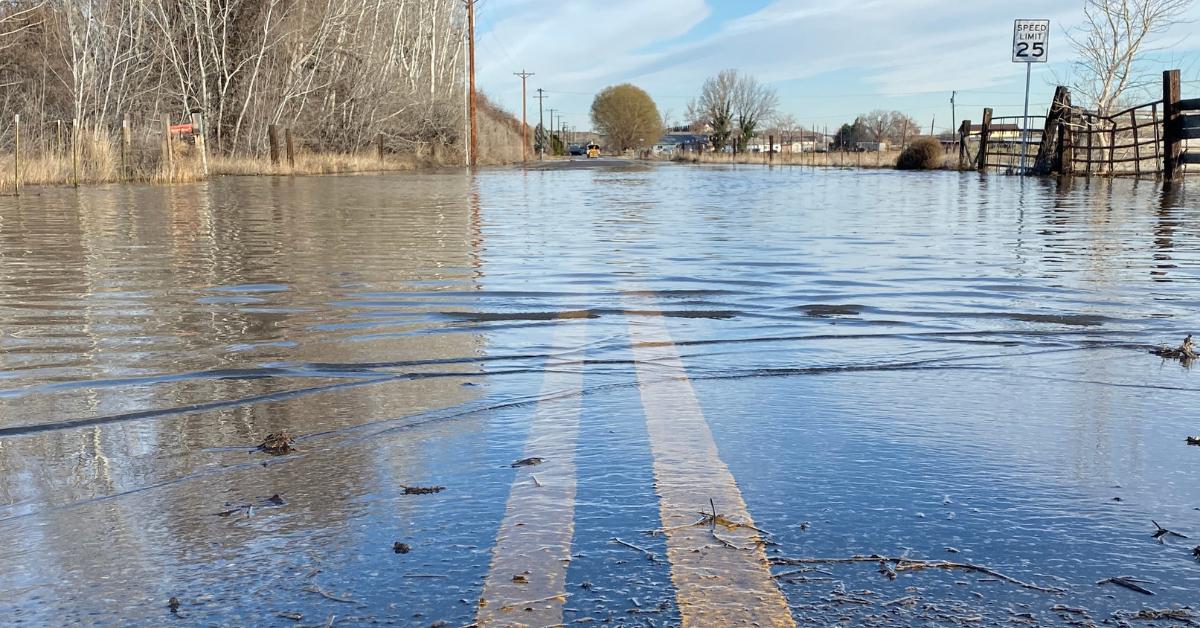
Municipalities and Cities
Cities and towns in flood-prone areas are often on tight budgets, even for emergency services as essential as flood protection. However, local governments have been using TrapBag barriers as a rapid-deploy solution for flooding for years, from Florida to Saskatchewan and beyond.
As a company, TrapBag is also proud to be available 24/7 to provide rapid delivery for communities that urgently need temporary flood protection barriers. If your community needs quick flood prevention, we’re just a phone call away.

Construction Sites
Flooding of any kind can be disastrous for construction sites and set back project schedules for months. TrapBag can protect construction sites of all types from costly flood damage, in addition to preventing soil erosion that can have serious environmental consequences. All of these can impact a construction firm’s bottom line, making TrapBag barriers essential for all types of projects.
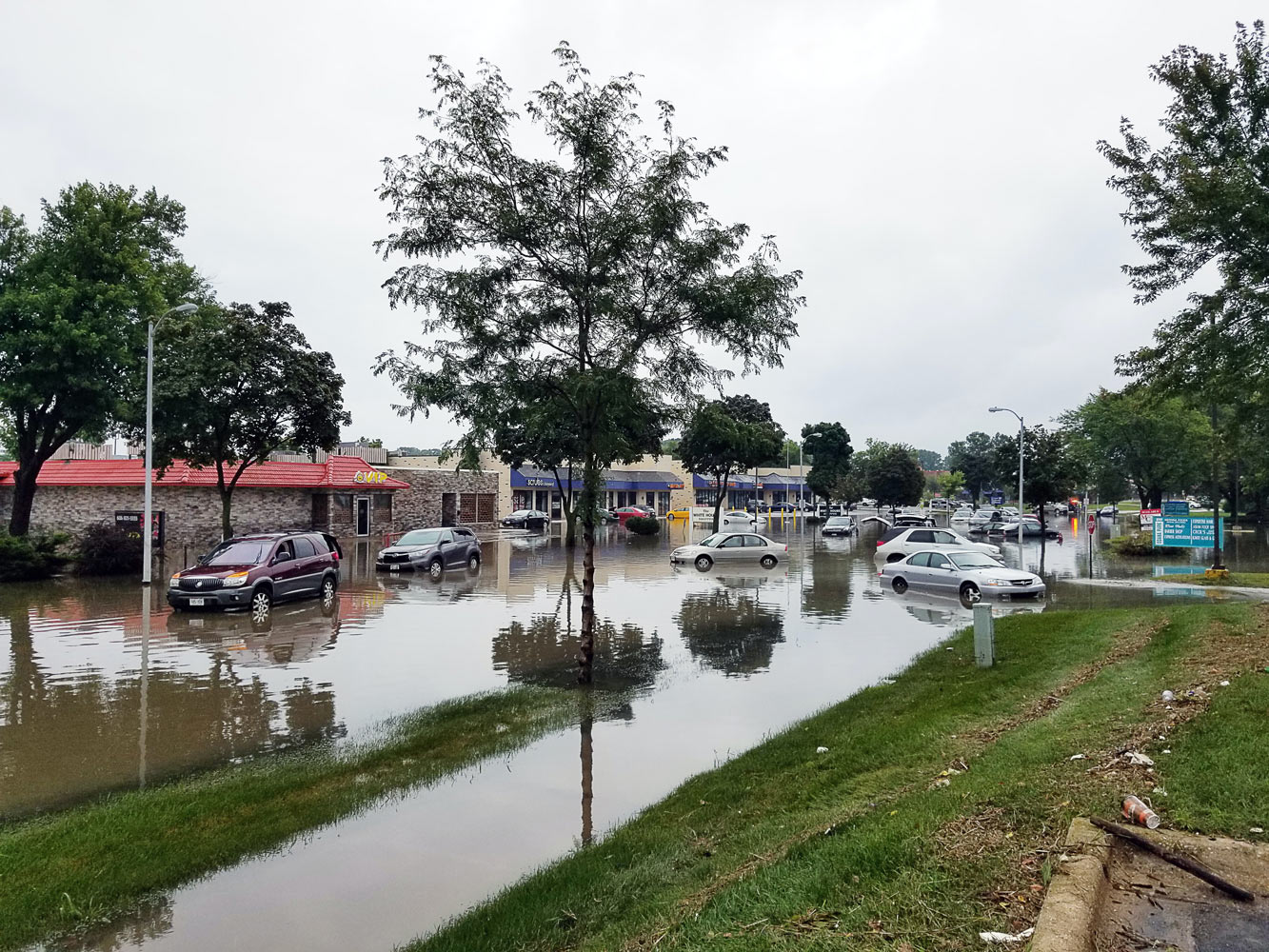
Commercial Properties
Whether your business campus is near a flood-prone river or your hospital is vulnerable to coastal floods or storm surge damage, TrapBag can help with commercial flood protection. These flood barriers can protect lives and property, preventing serious damage that could cost your business hundreds of thousands of dollars in ruined buildings and equipment.
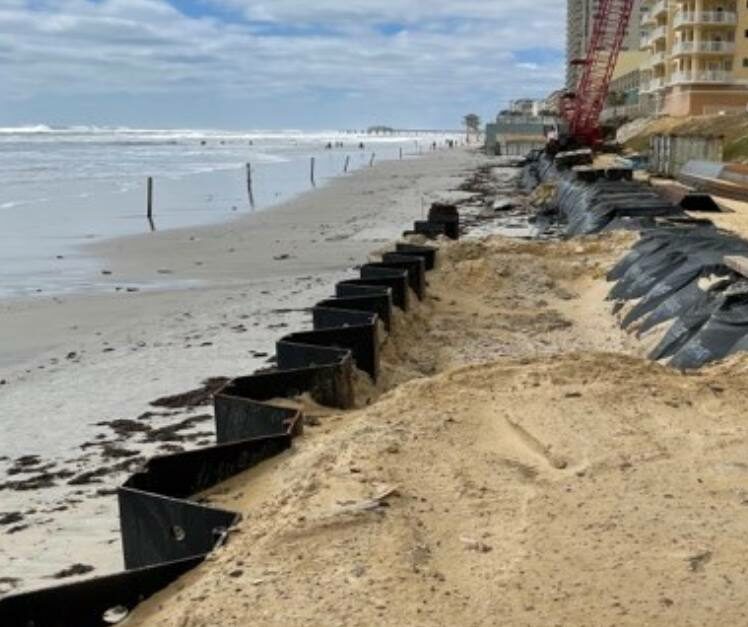
Other Applications
Whether you live in an area prone to flooding, mudslides, shoreline erosion, or anything in between, TrapBag can protect life and property from all sorts of natural disasters and damage. It’s also a great solution for security barriers, stormwater detention and retention, cofferdam systems, and much more.
Let TrapBag Be Your Go-To Flood Prevention System
TrapBag is easy to set up quickly as a flood control system, making it an essential part of any flood protection plan. To learn more about how TrapBag can protect life and property, call us at (239) 674-6611 or contact us online today.


